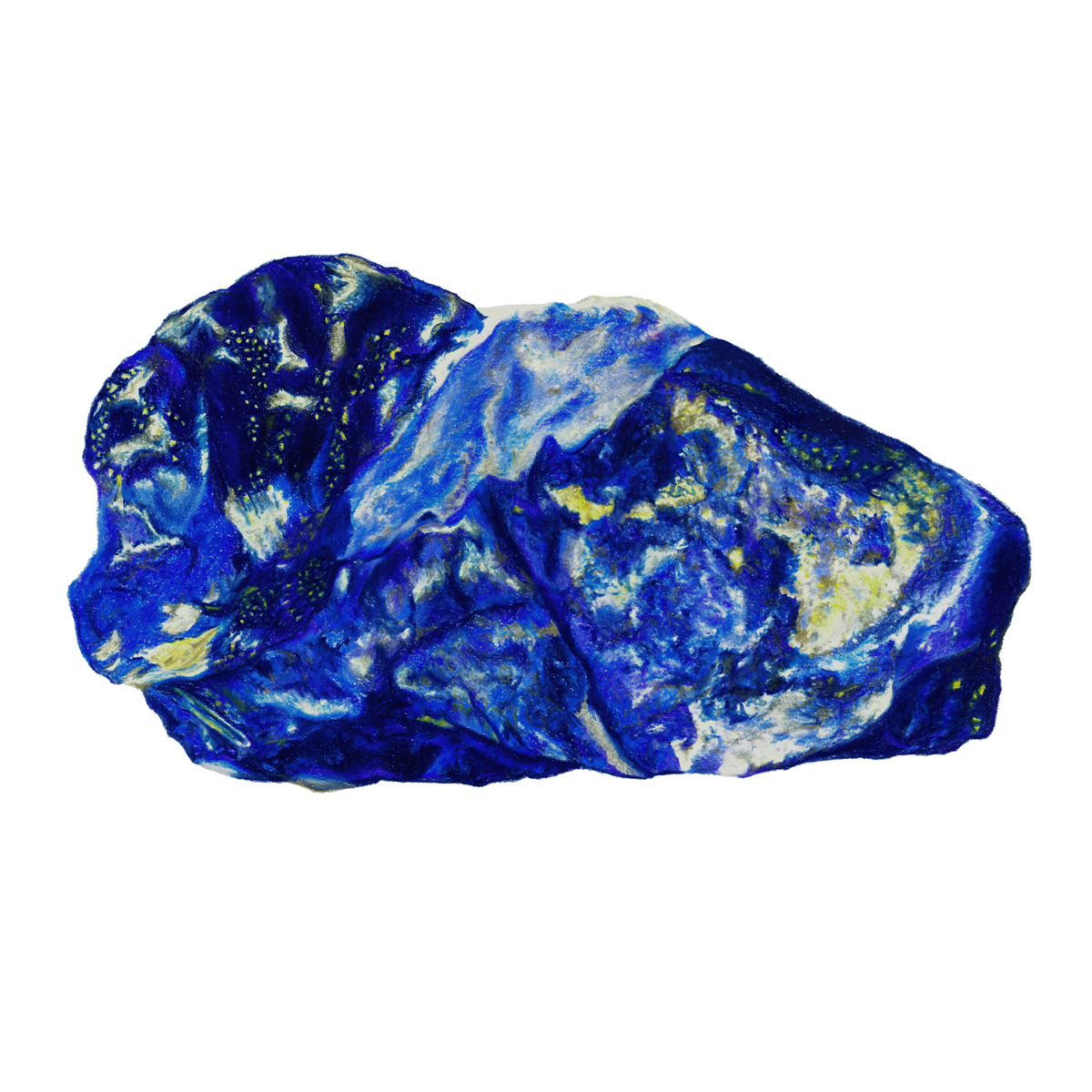Stone: Lapis Lazuli
Birthstone: An alternative birthstone for the month of September.
Country of origin: Chile, Siberia, Afghanistan, the United States and Myanmar.
About Lapis Lazuli: Lapis or lapis lazuli is a sensitive, relatively soft stone which is blue or violet in colour with speckles of gold throughout. It is one of the most valuable semi-opaque stones.
Often referred to as a gemstone, it consists of several minerals, the main component being lazurite and another key component being pyrite, which makes up the beautiful and desirable golden speckle. In Ancient Egypt, lapis lazuli was considered sacred for its rich blue hue and gold inclusions resembling stars in the night sky.
What is the meaning of Lapis Lazuli? Lapis is often used spiritually as a symbol of wisdom & truth and is thought to have healing abilities. Historically the deep, celestial blue was regarded as a symbol of royalty and status.
What is the history of Lapis Lazuli? Lapis lazuli is the world's oldest commercial gemstone and is historically and currently found in Chile, Siberia, Afghanistan, the United States and Myanmar.
Chilean lapis is one of the oldest mining practices in the world, dating back over 7,000 years. Lapis was first discovered in 1851, high in the Andes Mountains (approx. 3,500 meters high!) near the middle of Chile. It is located near the headwaters of the Tascadero River near the Chilean & Argentine border in the Coquimbo Region. This mine is only accessible in the summer from January through April.
Mining of lapis lazuli dates back to before the Middle Ages. Historically they used to blast to remove lapis but now they mine with diamond impregnated saws and drills.
Lapis was typically only worn in the Middle Ages as jewellery by royalty or ground down to a powder and used to create ultramarine pigments. It was considered the finest, most expensive pigment because of the rich blue colour it created. Many churches and palaces from the Middle Ages have wall panels and columns inlaid with lapis lazuli. Today it is mostly used in jewellery, sculptures, vases and ornaments.
What is the provenance/traceability of Lapis Lazuli? We have sourced our lapis from Chile in South America. This has been done through one of our fair trade & responsibly sourced stone suppliers.
Similar to how the Kimberley Process is used to determine the ethics around diamond sourcing, we use a coloured gemstones rating which shows responsibility levels from level 1 through to 5 - level one being the highest and five the lowest.
The Chilean lapis that we source is at level 3, meaning we know where the material comes from and have worked with the supplier for a long time. Most of these mines are very small operations that offer the material to the supplier who consolidates the rough for sale to cutters.
If you have any further questions about how we source this precious stone, we’re always happy to hear from you. Contact us at help@meadowlark.co.nz.
Caring for Lapis Lazuli: Like many precious stones, lapis is delicate and sensitive so is best handled with extra care. To keep it shining, it’s best to wipe down with a barely damp cloth, without any soap.
Lapis is sensitive to strong temperatures, pressure, acids and alkalis. Ensure you remove before doing any housework, physical activity or taking a hot bath or shower.
-
Shop Meadowlark pieces available with a Lapis Lazuli stone here & explore our Gemstone Guide here x






